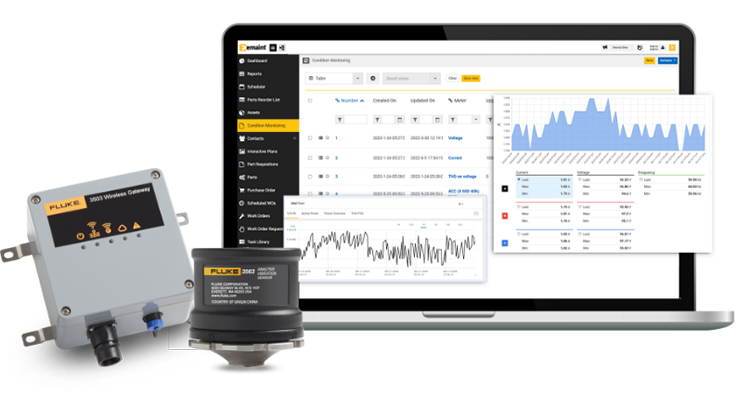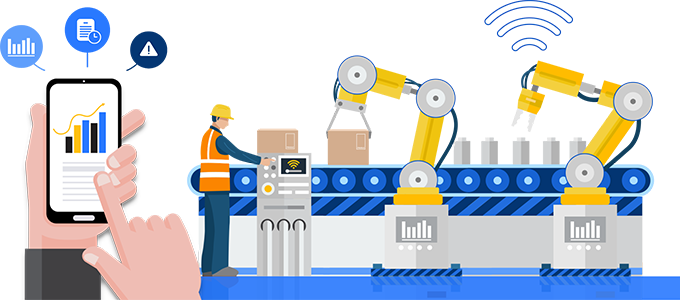Meet the Software that Simplifies
Condition Monitoring
Condition Monitoring
Maintenance and reliability teams already know the revolutionary potential of condition monitoring: they can set alarms, predict failures, and recommend the perfect plan of attack. Vibration is one of the earliest predictors of rotating machinery failure, and assets like motors, fans, and pumps are critical to production. But to many teams, vibration analysis is a lost art, calling for herculean effort, hours of free time, and years of experience.
eMaint condition monitoring a cloud-based software for monitoring, analyzing, and optimizing asset health. Powered by Azima diagnostics, part of the Fluke Reliability family, it simplifies vibration trend discovery for newcomers and provide experts with advanced insights. The system processes data from Azima Accel 310™ wireless triaxial vibration sensors, transforming raw measurements into actionable maintenance recommendations.
Trained on over 30 years of field data and about 100 trillion data points, the Azima diagnostics engine can detect 1,200+ fault conditions across 50 machinery component types and deliver actionable insights months before failure.
The resulting insights feed directly into eMaint CMMS, where they trigger actionable, automated work orders. Maintenance teams can set up alarms, share key asset data, and build a strategy to minimize downtime. In fact, this technology has helped customers reduce Priority 1 and 2 faults by up to 90%, cut enterprise program costs by 30%, and even increase production capacity by 2%.
To guide you on your condition monitoring journey and maximize your ROI, we also offer Remote Condition Monitoring (RCM) Services.
Maintenance Teams Can:
Monitor Asset Health
Set up alarms to notify when vibration data from Azima Accel 310™ sensors indicates a possible failure and trigger eMaint work orders.
Leverage AI-Powered Azima Diagnostics
Explore historical data and share trends across teams. Azima diagnostics analyze vibration data and recommend prioritized actions.
Boost KPIs: Uptime, OEE, MTTR & More
Improve performance across key metrics, with AI-powered diagnostics leading to a 30% reduction in enterprise vibration program costs, and a 2% increase in production capacity.
What Does eMaint Condition Monitoring Do?
Monitor Assets, Set Alarms, and See Failures Coming
Downtime disasters are coming — but eMaint can help stop them in their tracks with data analyzed by the Azima diagnostics engine.
Monitor asset health with Azima Accel 310™ sensors
eMaint condition monitoring connects seamlessly with Azima Accel 310™ wireless triaxial vibration sensors. The resultant high-resolution vibration data is analyzed to assess asset health.
Predict faults & failures with alarms
Alarms update you on asset status and warn of developing faults through Azima AI-powered analysis. Set alarms to go off based on overall vibration or narrowband signatures that herald failures.
Respond quickly, boosting uptime
Optimize maintenance response time. Receive email alerts and updates. View trends, FFT, envelope, and historical data.
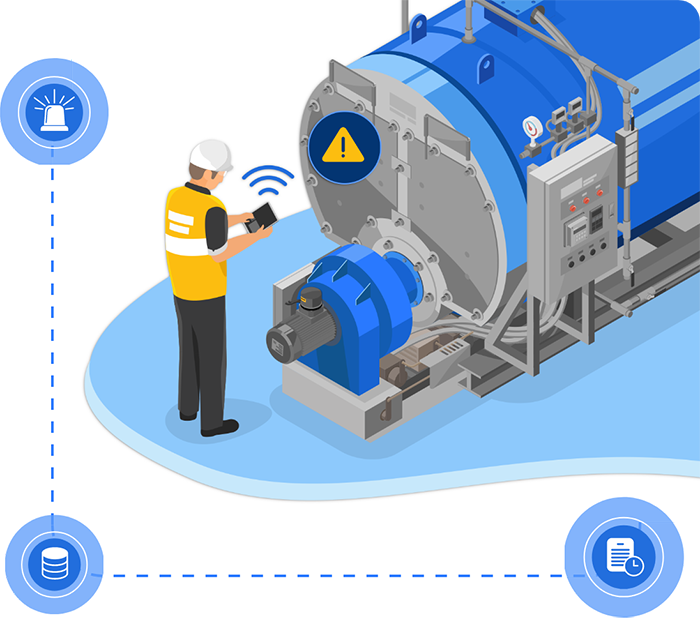
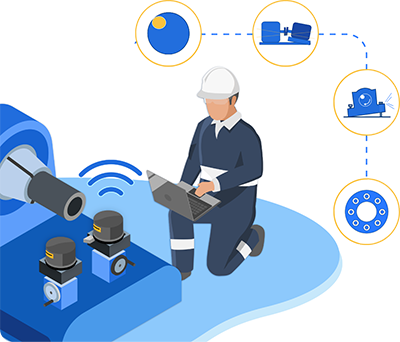
Advanced Analysis: Vibration Analysis, Simplified
Break free from traditional, siloed software with eMaint condition monitoring integrated with Azima Accel 310™ sensors and Azima diagnostics.
Simple, flexible data exploration
Quickly navigate between assets, components, and sensors. Easily filter to the data snapshots you need. Drag & drop charts for comparison.
Find the root causes of faults & prevent downtime
Track and trend overall vibration. Dive into the signal data and cascade views of historical FFTs. Discover and eliminate common causes of downtime.
Discover strategies that strengthen machine health & reliability
Get a full picture of machine health history. Review maintenance, usage, and uptime in eMaint CMMS. Analyze vibration trends and build an asset health strategy.
AI Analysis: Get Maintenance Recommendations
When your asset is at risk, Azima software doesn’t just detect the problem, it will guide you on the next steps.
Automatic AI analysis that helps non-experts
Azima diagnostics can detect 1,200+ fault conditions across 50 machinery component types, prioritizing findings by severity and urgency.
AI maintenance recommendations
Get AI-powered maintenance and corrective work suggestions based on specific faults. Receive e-mail notifications with prescribed solutions. Recommendations include urgency, severity, and prescribed correction.
Human and machine intelligence, hand in hand
Our condition monitoring experts can help you set up your sensors, interpret the data, and make the most of the AI’s recommendations.
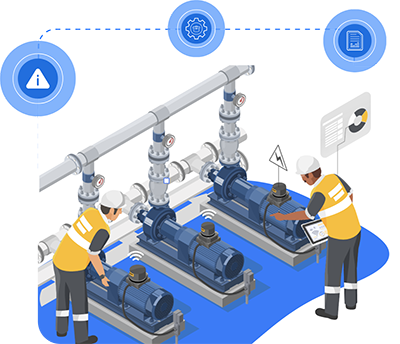
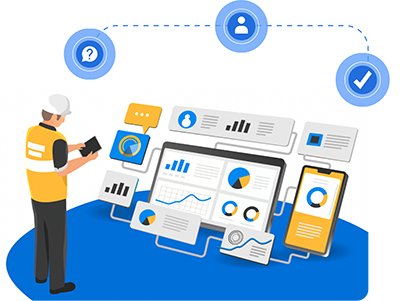
Remote Condition Monitoring Services: Expert Guidance, Maximum ROI
Our team is your team—global industry experts that ensure your condition monitoring program prevents failures & boosts uptime.
Here for you every step of the way
The Remote Condition Monitoring team is at your service and flexible to your needs. Our experts will monitor your assets for you, perform comprehensive assessments, and help you with strategy, data interpretation, and support.
Decades of experience
Our team of industry veterans are dedicated to making your program a success. We staff more than 50 CAT III and CAT IV professionals, along with ISO-trained Level II–IV analysts who provide diagnostics on over 500,000 machine tests each year. Equipped with our advanced AI, our analysts are up to 5× more efficient than traditional teams.
Proven results
Our Remote Condition Monitoring team will save you time and labor, while maximizing uptime, strengthening reliability, and ultimately driving production.
eMaint CMMS Integration: Connect Teams, Automate Work
eMaint CMMS turns insights from the Azima diagnostics engine into coordinated action.
Automate work orders & maximize uptime
Automate work orders to trigger based on condition monitoring alarms, reducing failure response times. See machine faults coming, sometimes months in advance, and plan ahead.
Build time-saving workflows
Build workflows to move work orders between operations, inventory, and purchasing. eMaint also integrates with ERPs BI platforms, SCADA/PLC systems, and much more.
Connect your teams and see the bigger picture
Simplified enterprise-level reporting gives you an eagle-eye view of condition monitoring data, maintenance history, and metric-driving insights.
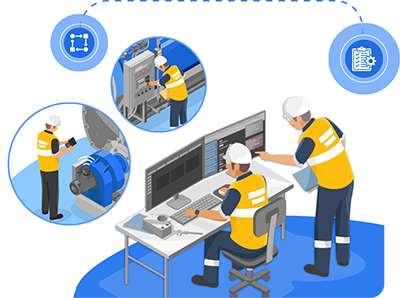
Better Together:
CMMS, Sensors, & Condition Monitoring Software
Fluke Reliability’s tools and software are industry-leading in their own categories. But maintenance technologies are even better together. eMaint condition monitoring is powered by the Azima diagnostics engine and integrated directly into eMaint CMMS.
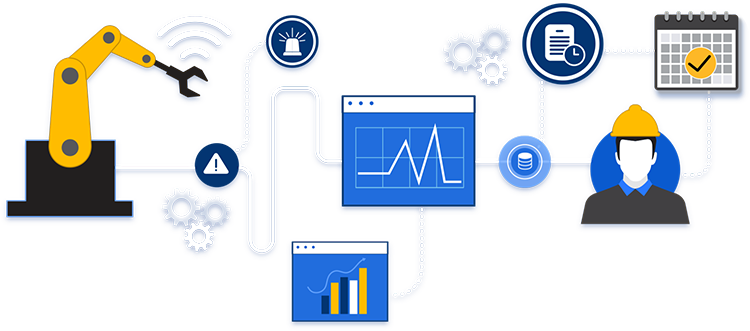
Here’s How Our Sensors and Software Deliver on the Promise of Connected Reliability:
